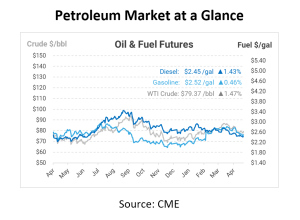
Steering Through Marine Fuel: What’s Best for Your Vessel?
Picture a marine vessel owner standing at the helm of his ship as it cuts through the ocean. With the rising costs of traditional fuels and the shifting regulations around maritime operations, he faces an important decision: which type of fuel will best meet his fleet’s needs in terms of cost-effectiveness and engine compatibility?
Marine fuels, also known as bunker fuels, are divided into two main types: heavy fuel oil (HFO) and distillates – Marine Gas Oil (MGO). The standards for these fuels, used in ships’ engines and boilers, are set by the International Maritime Organization (IMO) under the ISO 8217 standard. This widely recognized standard classifies marine fuels into residual (heavier) and distillate (lighter) fuels based on their main ingredients. The quality of these fuels is often indicated by their viscosity; lower viscosity means higher quality.
In this comprehensive analysis, we’ll explore the main types of marine fuels—Distillate Marine Fuel, Heavy fuel oil (HFO), Very-Low Sulphur Fuel, Ultra-Low Sulfur, and Biodiesel—evaluating their performance, operational suitability, and economic impact on maritime businesses.
Heavy Fuel Oil
Heavy Fuel Oil (HFO), widely used in today’s shipping industry, offers cost advantages as it is about 30% cheaper than distillate fuels like marine diesel oil or marine gas oil. However, HFO emits high levels of sulfur oxide, posing environmental and health risks, particularly near ports. To address these issues, the International Maritime Organization (IMO) set sulfur emission limits at 3.5% in 2012 and further reduced it to 0.5% by 2020. Despite these restrictions, the use of HFO continues, supported by technologies such as marine scrubbers that clean exhaust gases and reduce sulfur emissions.
Economically, HFO is preferred for its lower cost per energy unit, which is especially beneficial for large ships on extended voyages. However, its high viscosity presents challenges, requiring special handling and heating to maintain effective engine operations.
Distillate Marine Fuel (DMA)
Distillate Marine Fuel is a grade specification for marine fuels. The “D” stands for “distillate,” and the “MA” refers to a specific category within distillate fuels.
DMA is a type of Marine Gas Oil (MGO) and contains very low sulfur content. Suitable for most marine engines, DMA is known for its cleaner combustion, consistent performance, and ability to reduce emissions when compared to heavier, residual marine fuels. DMA fuels are primarily used in Category 3 marine engines or those with more than five liters per cylinder. This type of fuel is also commonly referred to as LSMGO, which stands for Low-Sulfur Marine Gas Oil. The naming emphasizes its low sulfur content, making it a preferred choice in regions with stringent environmental regulations. Learn more about DMA here.
Very-Low Sulfur Fuel
The very-low sulfur fuel, often referred to as Marine Diesel Oil (MDO), is crafted from refinery leftovers by blending suitable residual products with low-sulfur distillates. This process creates a high-quality fuel that adheres to the International Maritime Organization’s sulfur cap of 0.5%. While this type of fuel can include up to 40% residue product, it meets stringent emission standards and represents a viable solution for the industry. However, it does have its drawbacks, including potential sensitivity to mixing with other onboard fuels and the risk of instability, which can pose challenges in fuel management and engine operation. Learn more about VLSFO here.
Ultra-Low Sulfur Fuel
Ultra-low sulfur fuel, commonly known as Ultra-low Sulfur Marine Gas Oil (ULSMGO), is emerging as a new category within the marine industry. This range includes various fuel types primarily made from neat distillates that have undergone extensive refining processes. Some forms of MGO are hybrid blends that combine gas oil with residual oil. While this fuel range offers significant advantages, particularly with its maximum sulfur emission of 0.0015%, it also presents certain challenges. These also include concerns over fuel stability, the necessity for specialized management due to low viscosity levels, and issues related to contamination and compatibility with other fuels. Moreover, the relatively high cost of MGO could be driven by its potential high demand, adding another layer of complexity for shipping companies considering this option.
Biodiesel: The Alternative with Potential
Biodiesel stands out as an alternative fuel that is gaining traction within the maritime industry. Derived from natural oils and fats, biodiesel can potentially reduce dependence on traditional fossil fuels. It is compatible with most diesel engines without requiring significant modifications, which is a notable advantage. However, biodiesel’s lower energy density means that more fuel is required to produce the same amount of energy as diesel, leading to more frequent refueling stops. Additionally, biodiesel is generally more expensive than conventional marine fuels, which can deter widespread adoption.
Operational Implications and Cost Considerations
Choosing the right marine fuel involves weighing factors such as the size of the vessel, cost, availability, and operational requirements. While diesel offers unmatched range and reliability, its higher cost might not suit all operators. HFO’s lower price point is attractive, but the need for additional onboard fuel treatment systems can offset some savings. Biodiesel offers a renewable alternative, but its current price and energy output limitations pose challenges for broader use.
Looking for expert advice?
O’Rourke Marine Services, as part of Mansfield Service Partners, offers premium fuels, including DMA, ultra-low sulfur marine gas oil, on and off-road diesel, diesel exhaust fluid (DEF), and fuel additives to improve engine performance and safety. Give us a call today to learn more about our marine services and how we can address your unique business requirements.



